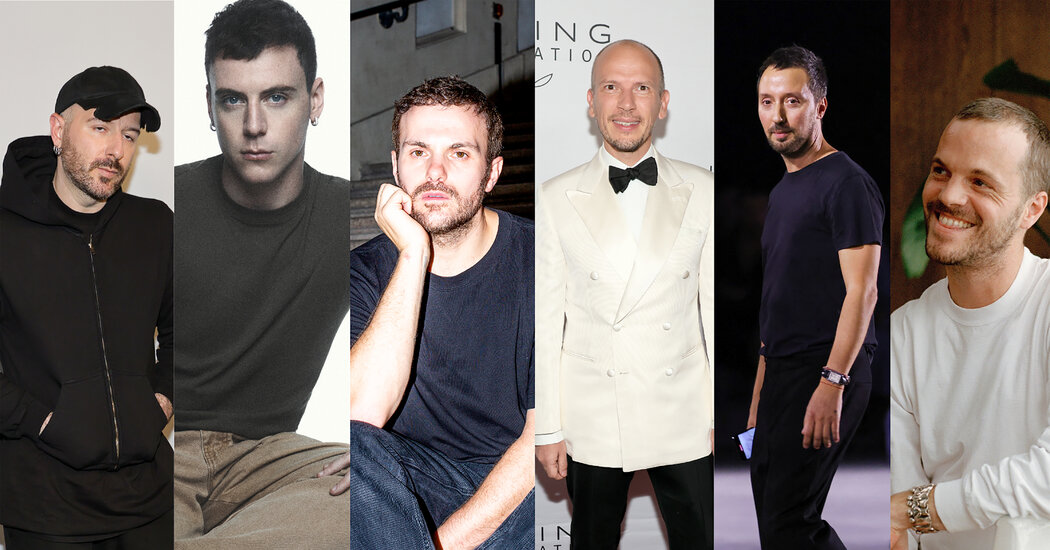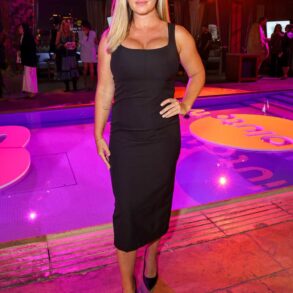
Why is the industry going backward when it comes to diversity and designers?
It has been a nutso year in designer churn. Last month, three new creative directors made their debuts during Milan Fashion Week: Sabato De Sarno at Gucci, Peter Hawkings at Tom Ford and Simone Bellotti at Bally. The day after Paris Fashion Week ended, Seán McGirr was named designer at Alexander McQueen, replacing Sarah Burton after more than a decade. Less than a week later, Chloé announced its new creative director, Chemena Kamali. Any day now, Moschino is expected to unveil its new designer.
And yet, despite all the changes — the kind of switcheroos that once would have signaled New Looks and Wardrobe Upheaval and all the stuff that makes what happens inside these brands affect the people who actually wear the products the brands produce — the result has been largely status quo. In the worst way.
Much has been made of the fact that Mr. McGirr’s appointment at Alexander McQueen means that now all six of the fashion brands owned by Kering, the second-largest fashion group in the industry, are run by white male designers — and not just white male designers, but white male designers with practically the same haircuts, approach to facial hair and résumés. That is not a good look, as the various reactions on social media to the headshots of the group’s creative directors made clear.
Designers are, after all, the most visible representations of a brand, or its ownership group. Whatever happens behind that facade — whatever the makeup of the teams or company board; whatever the diversity initiatives inside — the designers’ faces are the ones the public sees. In this case it looks as if the public reckoning with fashion’s history of racism that occurred in the wake of the Black Lives Matter movement never happened. The message those images send is homogeneity at a time when the population they should serve is broader and more varied than ever.
“So many people feel they actually don’t belong in this industry, which is supposed to be for everyone, because it dresses everyone, but then its reflection is so opposite to its function,” said Thebe Magugu, the young South African designer with a namesake line who won the LVMH prize for young designers in 2019.
Kering declined to comment on how it chose Mr. McGirr or how broad its search was. But the problems are deeper than one group. Fashion today doesn’t just have a diversity problem when it comes to race and gender and creative power. It also has a cognitive diversity problem that goes beyond external appearances.
With similar backgrounds and similar experiences come similar perspectives — and similar designs. In an age of silos and echo chambers, that risks reinforcing a rut rather than escaping one. And if there’s one thing fashion, an industry dependent on the ignition of desire, should understand it’s that similar designs lead to stasis.
Yet this is a story that occurs again and again and not just in fashion, but in film, publishing and TV. When one strategy seems to work, there is a mad rush to imitate it rather than recognizing that, in creative areas, it is exactly the thing you don’t know you want that becomes the most desirable thing; the thing that drives the next cycle of the imitation game. Simply following the pack may be safe, but it does not lead to the shock of success.
It’s how we end up with years of superhero movies (until superhero movies stop performing), with unending book series about vampires and faeries and their love affairs with mortal women, with a whole swath of designers hired out of streetwear lines — until the market gets saturated or the copy of the copy of the original becomes so removed from the source that it is no longer convincing.
If there’s one lesson fashion should learn it is that some of the many game-changing designers of recent history came from nontraditional backgrounds: Miuccia Prada, who studied political science and cannot sketch a dress; Demna Gvasalia, a child of war who wanted to change the definition of luxury and went from Vetements to Balenciaga (making him one of the Kering six); Telfar Clemens, who bucked the system entirely.
Yet currently, the industry model seems to be Up with No. 2! Or find the next big creative director in the shadows of an already successful creative director. That is exactly what is engendering the current spate of sameness, said Alice Bouleau, the head of the creative sector at Sterling International, a global search firm that works with many of the large fashion brands.
By the time anyone gets to that point in the system, she said, the barriers to entry — be it access to education or being able to take on months of unpaid internships — have largely weeded out more diverse candidates. Indeed, she said, she believed that about 70 percent, or at least two-thirds, of the designer directors or heads of design in major fashion houses are white men.
Then, the choice of who to name as creative director is largely up to the chief executive, most of whom are (yup) white men. And no matter how varied the candidates for a job, the chief executives are “choosing someone based on their own culture through their own bias,” Ms. Bouleau continued. Someone they “click” with.
She was shocked, she said, at “the number of conversations I had with C.E.O.s when we talked about a woman candidate and they asked me, ‘Do you think they are ready for this next move?’ It’s a question very rarely heard about a male candidate and sometimes male candidates were 15 years younger than the woman in question.”
At the same time, however, candidates from outside the system — candidates, and there are plenty of them, who forged their own path and started their own brands precisely because they did not see a system that was welcoming to designers with their profile — may be reluctant to join an establishment that demands they abandon the companies and communities they have created, even if they are offered the choice.
Mr. Magugu said that since he won the LVMH prize, “I’ve been approached for four or five things. The last one was quite, quite big. But the ask from each and every one of them was that I completely shut down my brand.” (Conventional wisdom seems to change every few years about whether a designer can do more than one brand at a time.)
Currently, Sterling is nearing the end of what Ms. Bouleau said were three major fashion searches, each of which included a number of female finalists. And yet, in at least two of the three, she said she expected the job to go to a white man.
It’s possible that one of them may surprise us, of course. Alessandro Michele — the former Gucci designer who was replaced by Mr. De Sarno and who was one of the last major creative directors to disrupt fashion when he tossed out the old Gucci jet-set kitsch in favor of unfettered historical muchness — did just that. It was his profile as an inside guy who overturned the norm that may have started the current designer trend.
Still, judging from their debut collections, it seems unlikely that Mr. De Sarno or Mr. Hawkings or Mr. Bellotti are going to ignite similar revolutions. Maybe Mr. McGirr will, when he makes his McQueen debut next February.
Or maybe this will be the moment that sparks another reckoning. Maybe this time, it will actually stick.







